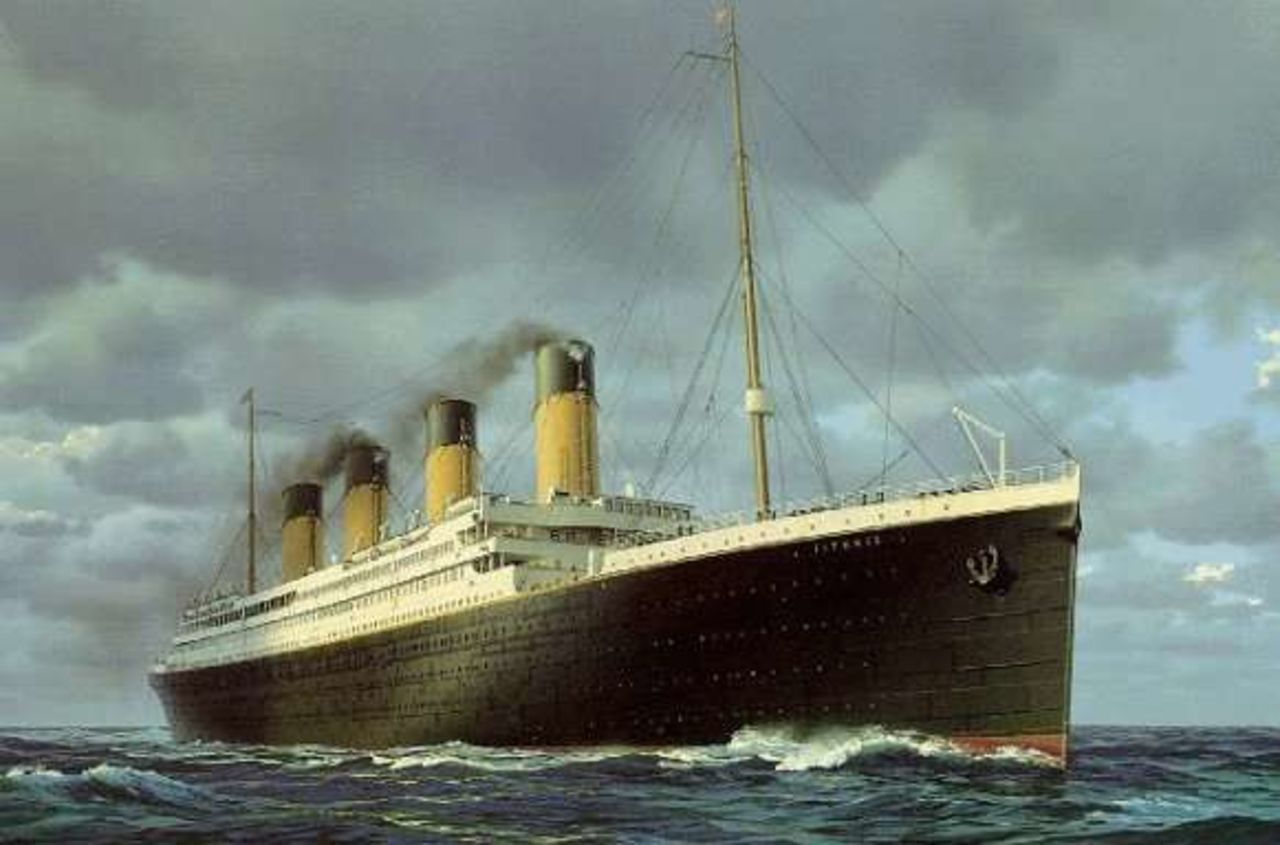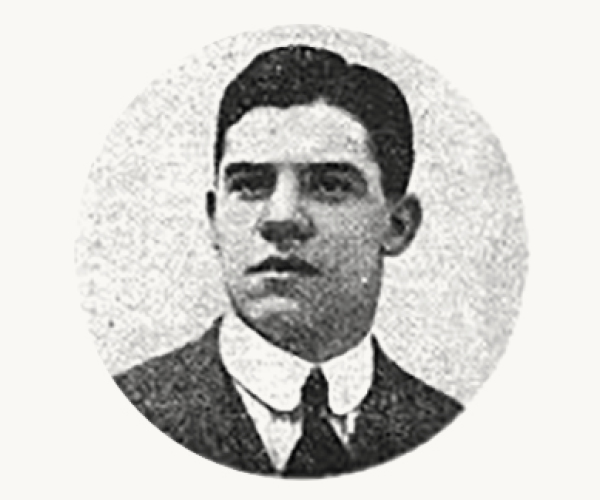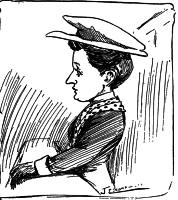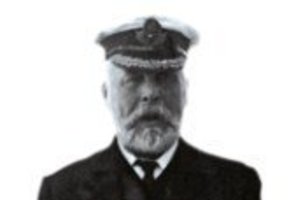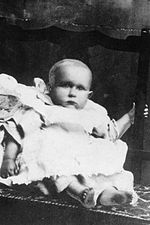New Zealand’s Connection with the Titanic
Officially, there were no New Zealanders on the RMS Titanic the night it struck an iceberg in the Atlantic Ocean on April 14th 1912.
One had a lucky escape – Christchurch businessman James Arthur Frostick, of Skelton, Frostick & Co, boot manufacturers, had booked for the Titanic’s maiden voyage. He had been on an extended tour abroad but because of business engagements, had had to cancel the voyage. It seems he did not tell his relatives and friends who feared he was on board. On the Wednesday, however, there came a reassuring telegram from Mr Frostick himself in London, stating that he had found it necessary to wait for another boat, and, so it was said, “he missed the tragedy”.
In fact, there were several interesting New Zealand connections to two passengers on the Titanic, one of whom survived and one of whom drowned. The one who survived was Charles Williams.
It is important to note that there were two Charles Williams on board the Titanic – Charles Duane Williams, who was a lawyer in Geneva, Switzerland and a first class passenger, drowned when he was crushed by the Titanic’s funnel as it sank.
The other was Charles Eugene Williams, travelling in second class. Charles Eugene Williams was the rackets coach at Harrow School and British rackets champion who had defeated J. Jamsetji of Bombay in London for the world championship in 1911. Rackets, sometimes called hard rackets, is a sport not to be confused with tennis or squash. It was originally played outdoors in the 18th century in the two main debtors’ prisons in England, the Kings Bench and Fleet, by gentlemen seeking to amuse themselves until they could pay off their creditors. Outside prisons and then taverns, Harrow was the first school at which rackets was played, probably from the early 1820s. In the middle of the 19th Century, rackets began to be played in covered courts. Today many rackets clubs and courts exist in the UK’s major public schools, universities and in exclusive clubs in England, USA and Canada. Charles Williams was the world rackets champion in 1911 , and was on his way to the USA to play the US champion Jock Soutar at Harvard University when the Titanic sank. (Image: Charles Eugene Williams, Daily Graphic, 20 April 1912).
What was Charles Williams’ connection to New Zealand? His mother and sister resided in Wellington, the former, a Mrs Elizabeth Williams, having come two years previously, after being widowed, to join her daughter, Mrs William Henry Riggin, the wife of the caretaker at Wellington Boys College. His mother, who it was said was supported by her son, was recorded as having returned Home (i.e. England) in September 1911 to see her son in England and then returning on the Corinthic to Wellington, arriving back only on the Tuesday16th April.
Williams was 23 years old when he set sail on the Titanic and was originally recorded as “missing” after the Titanic sank, along with his wife and child. The newswires may have mixed him up with Charles Duane Williams who did drown and whose son Richard Norris Williams, also on board, was a famous tennis champion, having been part of the winning U.S. Open mixed doubles in 1912, and who then went on to win the US men’s singles in 1914 and 1916.
However, the official records show Charles Eugene Williams survived and there is no mention of his wife and child in the passenger lists. It appears Charles beat Jock Soutar for the 1912 championship and Soutar then went on to be the champion until 1929, when Charles Williams again became world rackets champion until 1935.
There were five Australian-born passengers on the Titanic, one of whom had a New Zealand connection. This was Donald Samuel Campbell, Clerk in the Victualling Department of the Titanic. Some records describe him as an assistant purser , quite a responsible role on the Titanic where there were 891crew for 1317 passengers, but other records describe him as a 3rd class clerk. He was born in Melbourne, Australia and was age 28 when he drowned . His wages are recorded as £5 per month and his status as single.
Donald Campbell had been a purser on the Ulimaroa, a 5,000 ton passenger steamship built in 1908 which plied between Australia and New Zealand carrying up to 190 first, 120 second and 120 third class passengers. He had also narrowly escaped a similar fate on the Nemesis, which went down with all hands off the New South Wales coast in 1904, and on which he was acting as purser. He had earlier left the vessel at Port Pirie and went overland to Melbourne, but a quantity of his personal effects went down with the Nemesis.
His New Zealand connection was the fact that he appears to have been married to a woman of some fame, if not infamy, in New Zealand. The New Zealand Truth unsympathetically reported: The Titanic disaster claimed as a victim Donald Campbell, one-time purser on the Ulimaroa, who sprang into prominence because he married May Hallett. Campbell was assistant purser on the Titanic, and his life was offered up as a sacrifice. Incidentally, May should now be nearing the end of her seven months’ stretch. Will she prove a Merry Widow?
But who was May Hallett? She had arrived in New Zealand in 1908 as a domestic servant. She had first appeared in 1908 in the Supreme Court, charged with stealing a watch, chain, and pendant and about 7s from the dwelling of a Constable Perrin. The accused, May Hallett, was described as having lived a questionable life since arriving in New Zealand from England, and as having gone under the name of the Hon. Miss Coulson, while living at Thames. But the jury returned a verdict of not guilty and she was discharged.
Again in 1908, May Hallett was charged with false pretences in obtaining board and lodgings and not paying and sentenced to one month’s imprisonment. (Cartoon: N Z Free Lance Issue 449 6 Feb 1909).
In February 1909 she was described as “The Wellington Adventuress” with several aliases, who was charged at the Police Court with obtaining £50 by false pretences from Walter Lovelace Clifford. Walter Clifford was the son of a baronet and it was alleged that she had represented herself as a niece of the late Sir Henry Campbell–Bannerman, Prime Minister of England from 1905 to 1908. May was found “Not Guilty” and was cheered as she drove away in a cab. New Zealand Truth ranted and raved against the snobs of Wellington and Auckland for being taken in as much as it did against May Hallett for taking them in.
Again in June 1909 she was sued for £19 5s 6d, the hire of a motor-car, by Inglis Bros. The evidence was that the defendant, under the name of Miss Donald, had engaged a car and paid £10 deposit. She afterwards got it back from the chauffeur, and gave him £5 for his personal expenses. The Magistrate, said that it was evident she had travelled through the length and breadth of the North Island in the car, and made an order for the immediate payment, in default of fourteen days’ imprisonment. Counsel said that the defendant was willing to make a substantial offer to reduce the debt, even though she was at present working in a bar at £2 a week.
In 1911, things caught up with May – as Mrs Ethel Campbell, she was charged as having obtained £150 by false pretences from Mrs Mary Foote, of Whangarei. May Hallett and her husband Donald Campbell, said to be formerly purser of the White Star Line’s The Commonwealth, met Mary Foote on board the ship taking them Home to England. The case was heard at the London Assizes, resulting in a seven month prison sentence.
The Observer in 1917 went so far as to say: ”It is generally supposed that May made a ship’s officer marry her and that he perished in the Lusitania wreck, but whether he jumped overboard purposely or died accidentally, history sayeth not.”
Her obituary in 1922 in the New Zealand Observer said : “The snobbish circles of Wellington will remember her well, for in 1909 the cream of society fell a victim to her charms. Announcing herself as the niece of Sir Henry Campbell-Bannerman, May burst upon Wellington and took the guns by storm. She stopped at the best hotels and fleeced the snobs right and left. Eventually she stood in the dock, but the wily Tom Wilford, always a good man with a jury, got her off after going through a lot of theatricals at the expense of Walter Lovelace Clifford, who was brave enough to prosecute. Many others were in the same boat as Lovelace, but they paid up quietly.”
So Donald Campbell’s main claim to fame, apart from drowning in the Titanic, was his marriage to an adventuress in New Zealand. Was he aware of her activities? Was he involved in them? They still appeared to be travelling together in 1911 as husband and wife, so one can only assume yes. May was still in prison in London when he set sail on the Titanic as the 3rd class clerk in April 1912 – a sad ending for the adventuress and her husband.
Taranaki-born Rhonda Maher had two relatives on the Titanic: her brother-in-law Alfred Crawford and her grandmother’s cousin, Mabel Kate Bennett – both survived. Alfred was 36 and a bedroom steward. Alfred Crawford was Mabel Bennett’s brother-in-law, Crawford having married Mabel’s sister, Emily Pilgrim. Mabel, aged 34, was a stewardess when the Titanic sank – she died in 1974 aged 96, making her the longest-surviving female crew member.
Another current connection to the Titanic, revealed in the NZ Herald is a claim by Kiwi diver Rob McCallum to be “the last living person to have seen the Titanic”. He had visited the wreck in a high-tech submersible, and this month is leading an expedition to take 80 wealthy tourists at $72,000 each down in a submersible to see the wreck of the Titanic.
In the same article, a Pt. Chevalier woman, Mary Gould, said her grandfather built the ballroom and staircase of the Titanic at the Harland and Wolff shipyards in Belfast, Ireland. He had then moved to New Zealand in the 1920s to work on the railways.
The New Zealand Herald published an article called “Titanic captain’s link to Christchurch”. Captain Edward John Smith played in a cricket match in Lyttelton 22 years before the Titanic sunk. He was in town on a ship called the Coptic. He was bowled out for a duck and twice failed to score in a cricket match played against the Lyttelton Cricket Club on February 19th 1890. (Image Capt Edward John Smith, AP).
There may not have been any “New Zealanders” as such on the Titanic but there are some interesting connections and probably many more stories of indirect connections between the Titanic and New Zealand still waiting to be unearthed.
Sue Cooper
Remuera Heritage
14 April 2012
Download a selection of Titanic pictures and cartoons from the newspapers:
 Titanic Newspaper Articles Powerpoint (542 KB)
Titanic Newspaper Articles Powerpoint (542 KB)
Do you know of any New Zealand connection with the Titanic?
Email us on info@remueraheritage.org.nz with your story.
2014 Update
Another New Zealand connection was discovered in 2014. When the Titanic sunk in 1912, there were 300 bodies recovered from the Atlantic Ocean; only one was that of a child, whose identity remained undiscovered for 80 years. Scientists at the Armed Forces DNA Identification Laboratory in the US identified the child as 19 month old Sidney Leslie Goodwin, whose parents and five older siblings also died in the disaster. Further research by Dr Colleen Fitzpatrick, a forensic genealogist, discovered links between Sidney Leslie Goodwin of Melksham, England and the family of a Dunedin taxi driver, Ken Goodwin and Graeme Goodwin who lives near Christchurch. Members of the wider Goodwin family had emigrated from England to Christchurch. Ken’s late father, Ted Goodwin, grew up in Christchurch before shifting to Dunedin. Ken Goodwin was adopted by the family when he was 13 months.
http://www.odt.co.nz/news/dunedin/305539/dunedin-cabbie-linked-titanic-victim
http://www.radionz.co.nz/national/programmes/afternoons/20140612
